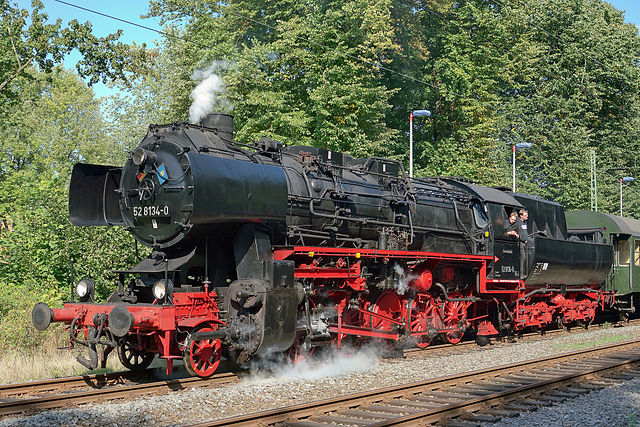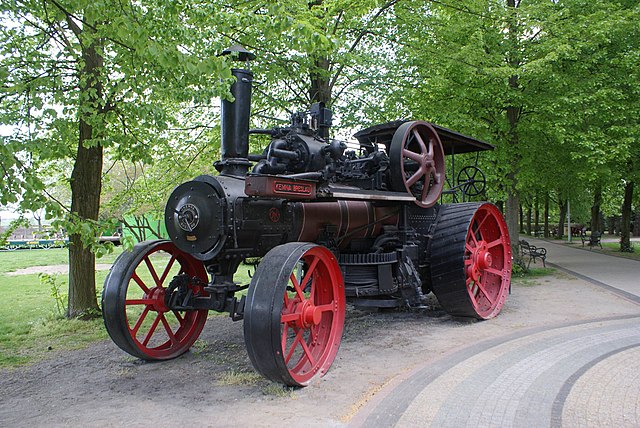The cylinder is the power-producing element of the steam engine powering a steam locomotive. The cylinder is made pressure-tight with end covers and a piston; a valve distributes the steam to the ends of the cylinder. Cylinders were initially cast iron, but later made of steel. The cylinder casting includes other features such as valve ports and mounting feet. The last big American locomotives incorporated the cylinders as part of huge one-piece steel castings that were the main frame of the locomotive. Renewable wearing surfaces were needed inside the cylinders and provided by cast-iron bushings.
The 'motion' on the left-hand side of 60163 Tornado. The black casting to the left houses the cylinder, in which slides the piston; the piston rod is immediately above the wheel.
French 2-2-2 locomotive with nearly horizontal cylinders, 1844
A NYC switching locomotive with outside valves driven by inside valve gear (Howden, Boys' Book of Locomotives, 1907)
The cylinders on a Shay locomotive.
A steam engine is a heat engine that performs mechanical work using steam as its working fluid. The steam engine uses the force produced by steam pressure to push a piston back and forth inside a cylinder. This pushing force can be transformed, by a connecting rod and crank, into rotational force for work. The term "steam engine" is most commonly applied to reciprocating engines as just described, although some authorities have also referred to the steam turbine and devices such as Hero's aeolipile as "steam engines". The essential feature of steam engines is that they are external combustion engines, where the working fluid is separated from the combustion products. The ideal thermodynamic cycle used to analyze this process is called the Rankine cycle. In general usage, the term steam engine can refer to either complete steam plants, such as railway steam locomotives and portable engines, or may refer to the piston or turbine machinery alone, as in the beam engine and stationary steam engine.

A model of a beam engine featuring James Watt's parallel linkage for double action
A mill engine from Stott Park Bobbin Mill, Cumbria, England
A steam locomotive from East Germany. This class of engine was built in 1942–1950 and operated until 1988.
A steam ploughing engine by Kemna








